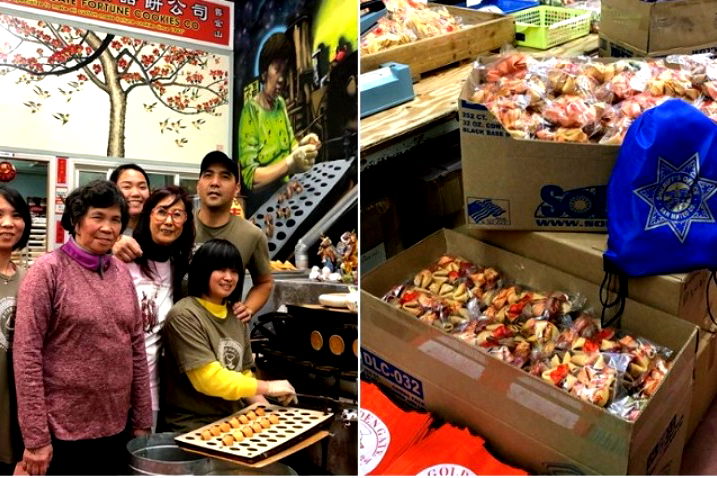The surprising Japanese origins of the ‘Chinese’ fortune cookie



By Carl Samson
While the fortune cookie — a beloved staple in Chinese American dining — is commonly linked to China, the auspicious treat surprisingly traces its roots to a completely different country, according to researchers on the subject.
Where it started: Evidence uncovered by folklorist Yasuko Nakamachi in the early 2000s point to late 19th century Japan as seeing the origins of the fortune cookie. An illustration from a book of stories published in 1878, which depicts an apprentice at a “senbei” (“cracker”) store making “tsujiura senbei” (“fortune crackers”), currently stands as one of the most convincing pieces of proof.
Journalist Jennifer 8. Lee detailed Nakamachi’s discoveries in her 2008 book “The Fortune Cookie Chronicles: Adventures in the World of Chinese Food.” Aside from finding the persuasive illustration, Nakamachi in the late 1990s was able to visit a family bakery — Sohonke Hogyokudo — near a Shinto shrine in Kyoto that sold similarly-shaped cookies with written fortunes for decades.
Those cookies, however, were larger, darker and made with sesame and miso instead of vanilla and butter (as with modern fortune cookies), Lee noted. Meanwhile, the fortunes were pinched in the cookie’s folds instead of being stuffed inside them.
How they reached America: Japanese immigrants, according to Lee, likely brought the cookies to Hawaii and California between the 1880s and early 1900s, a period when the Chinese Exclusion Act ousted Chinese nationals and sparked a new demand for cheap labor. The first restaurant known to serve the cookies was the Japanese Tea Garden in San Francisco, which sourced them from a local confectionery called Benkyodo and offered them until the outbreak of World War II.
Benkyodo, which closed in 2022, claimed to have pioneered the cookie’s use of vanilla and butter, as well as a machine for its mass production in 1911. However, there are other businesses reportedly asserting their invention of the cookies, such as family bakery Fugetsu-do, snack maker Umeya in Los Angeles and the Chinese-owned Hong Kong Noodle Company.
Being associated with Chinese restaurants: The journey of the fortune cookie from Japanese American bakeries to Chinese American restaurants can be traced back to World War II. The wartime incarceration of Japanese Americans in U.S. concentration camps prompted Chinese business owners to seize the opportunity to produce their own cookies.
Chinese restaurants also addressed a demand from veterans returning from the Pacific Theater, where they encountered the cookies. The treats were initially sold in California restaurants but quickly spread in many Chinese establishments across the country, with some 250 million cookies being made each year by the late 1950s.
Since then, modern fortune cookies have been a distinctly American treat. A video Lee had posted in 2008 shows Chinese people being absolutely clueless about them.
“What is this?” many asked. At least one was surprised by the written fortune inside.
Today, Brooklyn-based Wonton Food Inc. is the world’s biggest producer of fortune cookies. The company, which also runs facilities in Houston and Nashville, churns out 4.5 million cookies per day, or a whopping 1.6 billion cookies each year.
“You have the number of people who have been engaged through fortune cookies, you have fortune cookie little baby booties, fortune cookie jewelry,” Lee noted. “It really speaks to Americans in a very profound way.”
Share this Article
Share this Article





